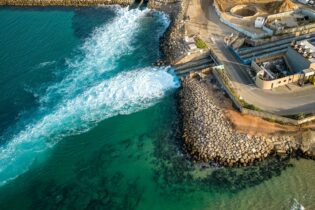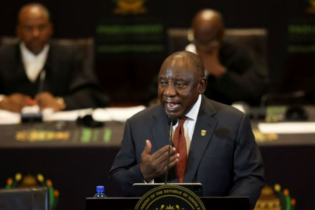The Progress Assessment Tool for the2014 Green Drop process starts in September 2013, with municipalities expected to respond by December 2013, according to Solomon Makate, Department of Water Affairs.
Makate was heading a workshop on the 2014 Green Drop Progress Requirements, which was held on the opening day of the 4thMunicipal Water Quality Conference at Sun City from 7 to 11 July 2013. Approximately 1 100 delegates attended the conference from all avenues of the water industry. The conference was convened under the theme “Together committed to excellent Water Quality for the future”.
Makate further added that while the criteria for the Green Drop process has not changed, the audit period runs from 1 July 2012 to 30 June2013. The scorecards are to be pre-populated by the department, with the onus on the participating municipalities to confirm the information is correct.
Efforts to focus on the 2014 Green Drop Report process have, however, been largely overshadowed by the announcement at the opening session of the conference that the 2012 Green Drop Results, which were to be announced at the Awards Dinner on Wednesday, 10 July 2013, would not be released. The announcement was made by Thandeka Mbassa, Deputy Director-General: Regions for the Department of Water Affairs.Speaking at the Gala Evening, the Minister of Water & Environmental Affairs, Edna Molewa, acknowledged the disappointment of the Green Drop Report participants, while assuring them that the report had not vanished and would be released at a later date.
According to Molewa, she was not surprised at their disappointment and was herself disappointed too, butthe circumstances around the delay were beyond her control. The report will be released as soon as further verification processes have been completed, including the submission to cabinet, which should be in three months (October), said Molewa.
“Only when each and every one of us plays a leadership role together, we can do more,” concluded Molewa.
Blue Drop Requirements 2013-2014 unpacked
Department of Water Affairs’ Mariette Swart also unpacked the Blue Drop Audit Requirements at the conference, indicating that the key risk areas for the 2013 Blue Drop Progress Assessment Tool include:
- The status of water safety planning; there needs to be evidence of the continuation of the process.
- Skills compliance to draft Regulation 17.
- Drink Water Quality Compliance –primarily with regards to microbiological (E. coli/faecal coliforms) compliance, chemical health, as well as risk-defined compliance issues as per the risk index.
According to Swart, the weighting would be 35% to water safety planning, with the possibility of a sampler’s bonus in this category; 10% to process management and control, with the possibility of a process control bonus in this category; and 30% towards drinking water quality verification (i.e. compliance), with penalties awarded in this category for data differences, less than 11 months data being available and notification failures. Compliance is to be evaluated against Regulation 2834 and excellence compliance against Draft Regulation 17, which will be recognised as a bonus.
A further 10% would be allocated to management, accountability and local regulation, with bonuses being possible for publication of performance and performance agreements. Penalties can, however, also be accrued for the incorrect or incomplete submission of drinking water quality data. According to Swart, the penalty will apply should the department find proof during or after theassessment that the water services institution is guilty of an offence as per Section 82 of the Water Services Act, by only submitting partial information in order to present a false impression of drinking water quality performance and/or compliance.
The final 15% is awarded to the asset management section.
Shefurther indicated that site visits would be taking place in the final quarter of this year, from October 2013 to December 2013, and would include water treatment works inspections in order to verify operational efficiency, check on process control competencies and inspect risk control measures.
NWRS2 implementation involves everyone
The National Water Resource Strategy 2 (NWRS2) is not only a Department of Water Affairs strategy, but rather belongs to and therefore should be implemented by the whole water sector. This was Marie Brisley of the Department of Water Affairs’ main message the first time the strategy was presented to a public forum at the conference.
According to Brisley, without effective metering, billing and use efficiency, the total water demand will rise to 20 billion m³/year before 2025 and exceed the total yield available. The core message of her presentation was therefore that fresh surface water as a resource is at its limit in most areas; however, there is sufficient alternative potential water available. This is through improved efficiency and water loss management, reuse, local resource optimisation especially of groundwater, improved control, resource protection, desalination, transfers and system optimisation.
“However, accessibility is conditional and at a cost,” stressed Brisley, adding that it requires effort and timeous implementation while facing spatial challenges and sector use viability challenges. “Water quality and habitat is a major concern.”
As such we need to stretch not only water resources, but also water funding and infrastructure while managing major social, economic and environmental risks.
Approach to implementation
Sheadded that the department’s approach to the implementation of the NWRS2 would be participatory, emphasising citizens’ participation and implementation commitment by all water users and sector stakeholders. There will also be a focus on partnerships with the private sector and civil society, according to Brisley, who also made sure to emphasise the fact that the success of the NWRS2 is dependent on all stakeholders, not just the public sector.
Implementation also involved the centrality of water in planning and decision making where all sectors consider water availability in their development planning, among other key implementation principles.
Sheexplained that the NWRS2 Implementation Framework would guide development of implementation plans to operationalise the strategy. These are to be developed in a collaborative manner with sector stakeholders and water users per water use type and group.
The five priorities for the next five years – and the implementation plans are to respond to these – have therefore been identified as:
- achieving equity, including water allocation reform
- water conservation andwater demand management
- institutional establishment and good governance
- compliance monitoring and enforcement
- adequate funding, operation and maintenance of water resources infrastructure.
She stated that as a country we must manage our scarce fresh water resource to the benefit of the country as a whole and we must be guided by national strategic imperatives as defined by government. “Let’s make it happen,” concluded Brisley.
Process controller professionalisation pivotal
“What we lack in the water sector is a credible skills planning programme,” said Prof Alvin Lagardien at the conference. Lagardien was representing both the Department of Water Affairs and the Water Institute of South Africa (WISA) as he reported back on the developments in the professionalisation of Process Controllers.
According to Lagardien, the promoting of professional excellence requires new designations and, more specifically, occupational designations in accordance with sector needs, such as process controller, water services artisan, water pollution control officer, superintendent and water utility manager.
The challenges for water sector professionalisation, however, remain. According to Lagardien, these include that the current Organising Framework for Occupation for skills planning does not cater for water sector careers and the uncertainty over the link between qualification and available career paths in the sector limits the uptake and thus the sustainability of CB&T initiatives.
According to Lagardien, there is currently a plethora of education and training programmes thatlack currency and portability. Qualifications and certificates obtained often receive no recognition with regard to career progression skills enhancement. “How do we link strategic/professional/occupational needs and career paths in the water sector to appropriate qualifications and training programmes?”
He reiterated that WISA has set up a capacity building and training division and has developed, together with the Department of Water Affairs, a concept note to professionalise water sector careers. “Given the need to improve the status of process controllers, as well as the related process of capacity building and classification, this was earmarked as the first designation to be professionalised by WISA,” said Lagardien.
As such, he reported that a national database of approximately 5 600 process controllers was being set up with four provincial process controller branches already having been established, the most recent one in Limpopo. In addition, a technical task team has also been established to provide input into the alignment of the classification and registration process.
Finally, WISA’s application as a professional body and itsapplication for process control as the first professional designation has been lodged with the South African Qualifications Authority. “WISA cannot become a training body and compete with its members, but it will be engaging on this level with the related roleplayers,” said Lagardien.
“The process of professionalisation will promote the image and recognition of the process controllers, improve accountability and establish a coherent training accreditation and certification system,” he concluded.








